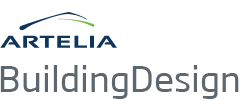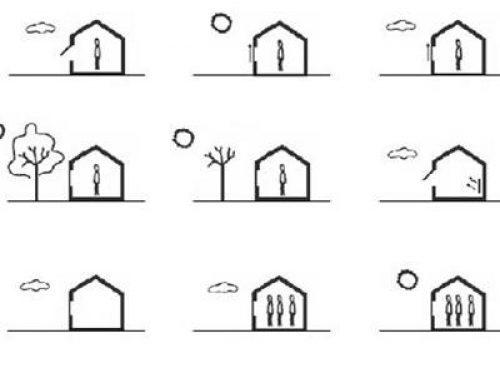Project Description
Bachelorprojekt
Abstract
Studies of indoor climate in contemporary low-energy housing indicate increasing problems with overheating of dwellings. The Danish Building Regulations 2010 define requirements for the thermal indoor climate in future dwellings to overcome these problems. The software Be10 developed by the Danish Building Research Institute (SBi) include a toolset, Sommerkomfort, for determining the number of hours with overheating based on the simplified calculation method in DS/EN ISO 13790. The tool is intended to be used for documentation of construction proposals.
The purpose of this project is to analyze the calculation method applied in Sommerkomfort and assess it as a documentation tool.
The assessment approach of this project is a parametric analysis with 8 parameters of significance for the thermal indoor climate. As a basis of comparison, the verified simulation tool BSim is used. With the parametric analysis and simulations of the thermal indoor climate, predictions of trends and impacts by using Sommerkomfort as a tool of documentation are proposed. Based on this analysis, it is concluded how accurately the program can determine the thermal indoor climate.
It was found that despite the comfort of few parametric input options Sommerkomfort provides a great degree of difficulty in predicting the actual conditions of the thermal indoor climate. It is determined from the parameter variation that Be10 calculates fewer hours with excess temperature compared to BSim. This implies that the documented indoor climate is faultily over estimated. By chunking temperatures in intervals, the overestimate is lowered. Therefore, a recommendation is to specify requirements for the number of hours with excess temperatures in intervals instead of a specified number of hours. This entails Sommerkomfort maintains its minimal input options and therefore kept as a simple entry of documentation without compromising the model for calculating good thermal comfort in residential buildings.
Resume
Undersøgelser af indeklimaet i nutidigt lavenergibyggeri viser, at der forekommer problemer med overophedning
af boliger. Som konsekvens af det stigende problem, er der i Bygningsreglementet 2010 indført krav til
det termiske indeklima i fremtidigt boligbyggeri. Dokumentation kan foreligge i form af en simulering af det
termiske indeklima eller ved en forenklet beregning. Statens Byggeforskningsinstitut har med programdelen
Sommerkomfort i Be10 udarbejdet et dokumentationsværktøj på baggrund af den forenklede metode i DS/EN
ISO 13790. Hensigten med dette projekt er, at analysere beregningsmetoden i Sommerkomfort. Herudfra konkluderes,
hvor nøjagtigt programmet kan bestemme det termiske indeklima.
Metoden der anvendes, er en parameteranalyse, hvor otte væsentlige parametre for det termiske indeklima
undersøges. Som sammenligningsgrundlag benyttes det verificerede simuleringsværktøj BSim. Ud fra parameteranalysens
simuleringsresultater vurderes tendenser og konsekvenser, der fremgår ved at benytte Sommerkomfort
som dokumentationsværktøj.
Den minimale mængde af indtastningsmuligheder i Sommerkomfort gør det vanskelig at forudsige de reelle
forhold ved simulering af det termiske indeklima. Af parametervariationen fremgår, at Be10 regner for få
overtemperaturtimer ift. BSim. Dette medfører, at det dokumenterede indeklima er bedre end det i virkeligheden
er. En anbefaling er, at angive kravene til antallet af overtemperaturtimer i intervaller i stedet for konkret
antal timer. Derved opnås, at den simple indtastning for dokumentation i Be10 bibeholdes, samtidig med at
der implementeres tiltag for god termisk komfort i boligbyggeri.






